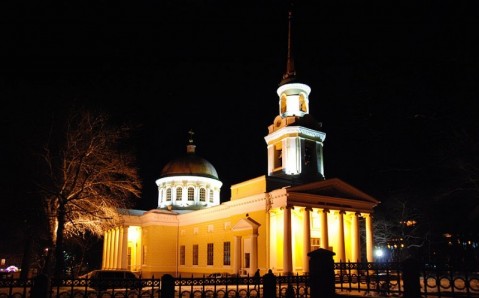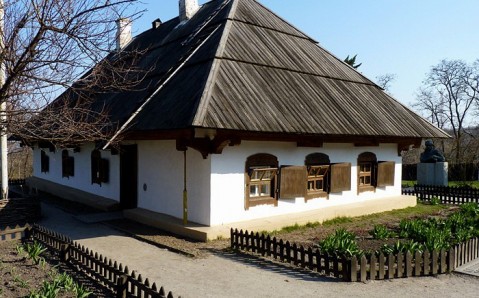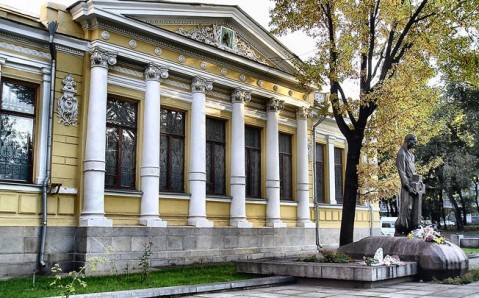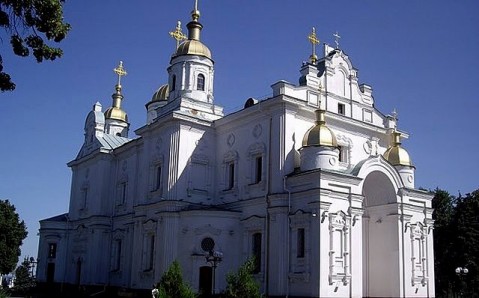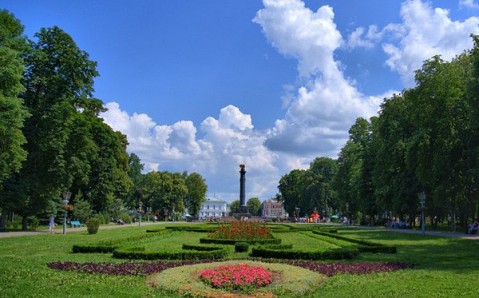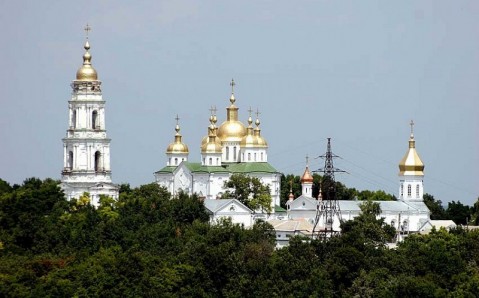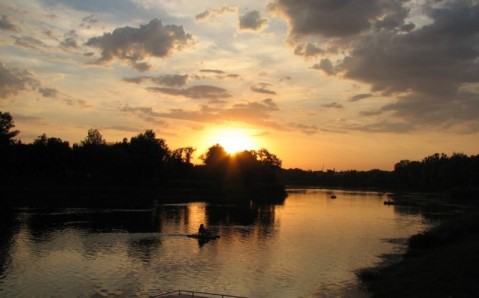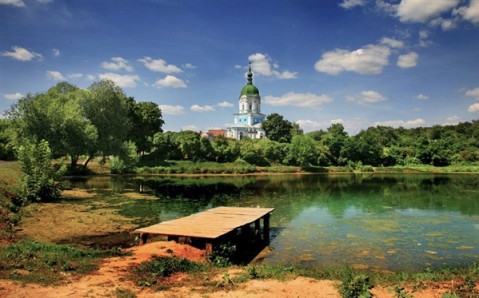The Transfiguration Cathedral
•
Dnipro (209 km.)
The Transfiguration Cathedral
•
Dnipro (209 km.)
Situated at the town's historical center, the majestic, striking with its strict beauty Transfiguration Cathedral is Dnipropetrovsk's symbol and belongs to Ukraine's prominent cultic buildings. This magnificent temple is the brightest architectural monument in classicism style and remains Dnipropetrovsk's true adornment for almost two centuries already.
The first stone in the Cathedral's foundatio
The Museum-Mansion of Ivan Kotliarevsky
•
Poltava (294 km.)
The Museum-Mansion of Ivan Kotliarevsky
•
Poltava (294 km.)
A lot of sights in Poltava are connected with the name of the classical Ukrainian writer and dramatist Ivan Kotliarevsky who lived the greater part of his life and created his most famous works here - among them the prominent poem 'Aeneid'. His Museum-Mansion at the town's historical center near the Assumption Cathedral is one of Poltava's most picturesque and most visited sights.
The real mansion
History Museum
•
Dnipro (209 km.)
History Museum
•
Dnipro (209 km.)
Founded in 1849, Dnipropetrovsk's History Museum is among the oldest and the largest Ukrainian museums. Initially it was called 'The Public Museum of Catherine's Governorate' and was situated in the Potemkin Palace. Today its impressive collection is located in the building that is the most interesting architectural monument of the early 20th century.
Museum's first exhibits were various antiquiti
The Assumption Cathedral
•
Poltava (294 km.)
The Assumption Cathedral
•
Poltava (294 km.)
At Poltava's historical center - on the Ivanova Gora, where town's key historical and architectural sights are gathered - the magnificent building of the Holly Assumption Cathedral is particularly notable. Today it is one of the main Orthodox temples in the region.
In the late 18th century, the Cathedral was built on place of wooden church that stood on the territory of Poltava's fortress and beca
The Round Square (Corps Garden)
•
Poltava (296 km.)
The Round Square (Corps Garden)
•
Poltava (296 km.)
Situated at the town's very center, the Round Square with the picturesque Corps Garden is the heart of Poltava. Its original ensemble - distinctly reminiscent of the Palace Square in St. Petersburg - is among Ukraine's most famous architectural complexes in Russian classicism style.
The Square was founded in the early 19th century at the suburban wasteland, where the Market Square used to locate.
The Exaltation of the Cross Monastery
•
Poltava (294 km.)
The Exaltation of the Cross Monastery
•
Poltava (294 km.)
Built in 1650 on the hill near Vorskla River, the Exaltation of the Cross Monastery is considered to be one of the best samples of Ukrainian baroque architecture and one of Poltava's most interesting sights. However, it's not just a valuable architectural monument - many important historical events are connected with the cloister.
In the late 17th century, the monastery was captured and ransacked
The National Historical-Cultural Reserve ‘The Field of the Battle of Poltava’
•
Poltava (298 km.)
The National Historical-Cultural Reserve ‘The Field of the Battle of Poltava’
•
Poltava (298 km.)
In the summer of 1709, a battle took place in Poltava. It decided the results of not only the 21-year long Northern War, but also the future of Ukraine, Russia, and Europe. Two hundred years later, the National Historical-Cultural Reserve ‘The Field of the Battle of Poltava’ was created at the place of the battle. Right away, it became the city’s main attraction.
It is the only cultural reserve i
Mirgorod
•
Poltava (375 km.)
Mirgorod
•
Poltava (375 km.)
The calm and tranquil Mirgorod, spread on the banks of Khorol River, is one of the most admirable treasures around Poltava. Tourists visit this fairytale town to have a good rest, improve their health, admire the rich colors of the nature, to feel the inimitable atmosphere that inspired the great Ukrainian-Russian writer Nickolay Gogol, and to visit the famous Sorochyntsy Fair. And most importantl
Dikanka
•
Poltava (312 km.)
Dikanka
•
Poltava (312 km.)
When you enter picturesque Dikanka, located in the north of the Poltavskaya Oblast', you cannot help but wonder how such a great number of natural, architectural, and historical riches can fit in a relatively small space. However, it immediately becomes clear why the great Nikolai Gogol chose this marvelous place as a 'decoration' for scenes of his original works.
Shrouded in many legends and mys

 Eastern
Eastern
